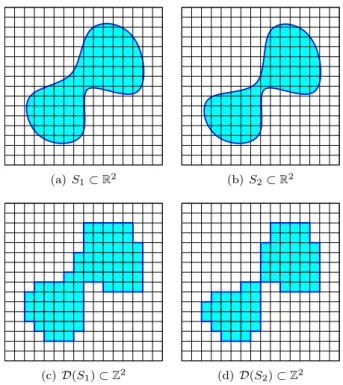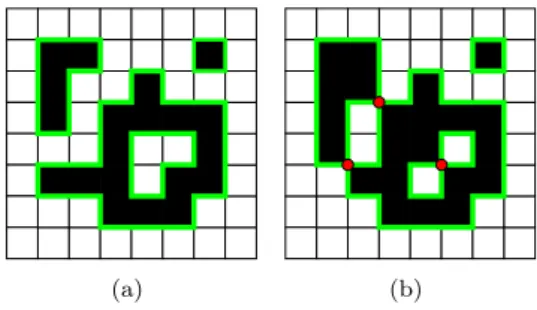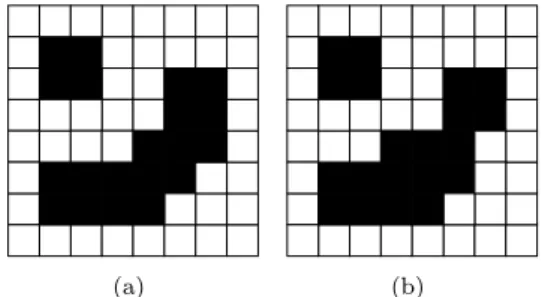Digital shapes, digital boundaries and rigid transformations: A topological discussion
Texte intégral
Figure




Documents relatifs
Implicit in the term « geometrical speciality » is the assumption that specific values of misorientation and/or certain grain boundary planes can lead to particular
Keywords: 3D Image Segmentation, Simple Point, Deformable Model, Intervoxel Boundaries, Multi-Label Image, Cubical complexes.. Context
Since the direct digitization of a hypersphere S c,r has obviously not enough integer points to ensure good topological properties such as separation of the space, one first applies
In this paper, we will try to show how the French publishing landscape and access to educational resources is currently undergoing important changes, starting
By modifying the format of the DSCs, ZoneOpt improves the analysis time (2s) by reducing the number of triggered rules. F irstContext operator forces the parser to consider only
In particular, we consider an alternative approach to regularity, based on quasi-r- regular polygons, which are used as intermediate continuous models of digital shapes for their
Indeed, in order to propose efficient methods for topology reparation after digitized rigid transformations, it is crucial to understand how the adjacency structure of digital
Generally, preserving the geometry also implies to preserve the topology. This is the motivation for our second contribution. Indeed, we propose a new notion of
